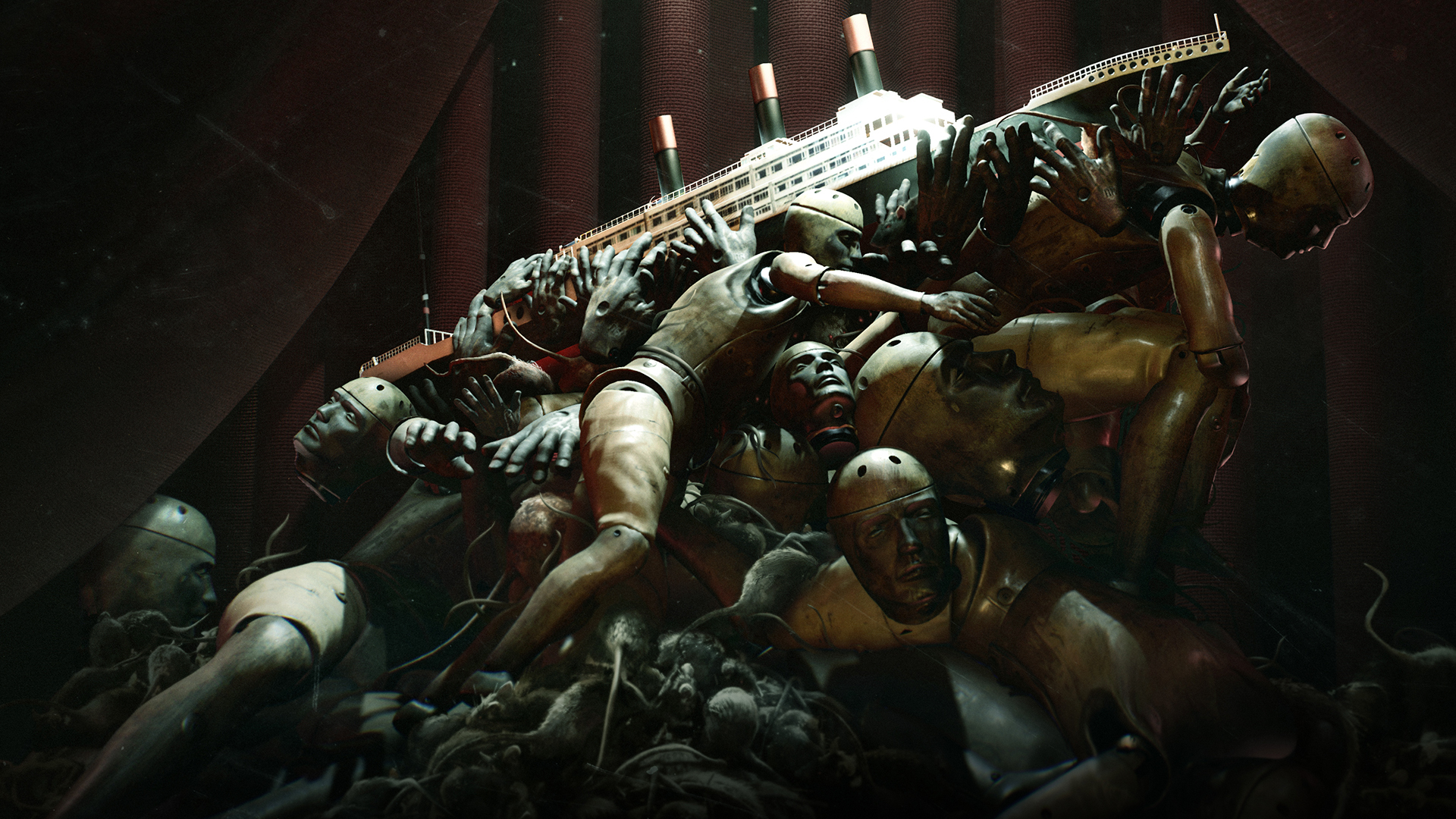Back in 2016, the game developer Bloober Team came out with their first indie horror title called Layers of Fear. Three years later, they would team up with Gun Media to publish a sequel. There was a lot of hype and I was a part of it, but how did I fare with its follow-up?
Back when Layers of Fear first launched, I was immediately captured by the concept of it. At this time, atmospheric horror was starting to become popular as the typical run-shoot-hide style of horror games was becoming somewhat played out, in my opinion, and it needed a refresher. Thanks to the cancelled game that Hideo Kojima and Guillermo Del Toro were working on, P.T. – the Silent Hills demo, indie developers were wanting to capture the magic since Konami shut the door on Kojima’s project. Taking inspiration from a title with no fighting, no gameplay mechanic complexity as it was simply two hallways, indie developers had started to repeat the processes. Beautiful and near photo-realistic textures and animation with a horror story that left you walking around, gathering clues and living in fear — it became the model for horror games.
Layers of Fear dropped, with a proper publisher to back it, and the influences were seen almost immediately.
Within the game, you find yourself taking on the role of a rather troubled artist who is locked away in his sprawling home and an accompanying dementia. It’s up to you to work through his psychosis to find out what happened to not only himself, but his family as well. It was a simple premise but the game was anything but. Transition shots during the game would make the player feel absolutely beside themselves, wondering when the game turned them on their head. You’d walk in a door and turn around to see a new hallway you had never encountered. To say Layers of Fear was a game is somewhat diminishing because it was far more of an experience.
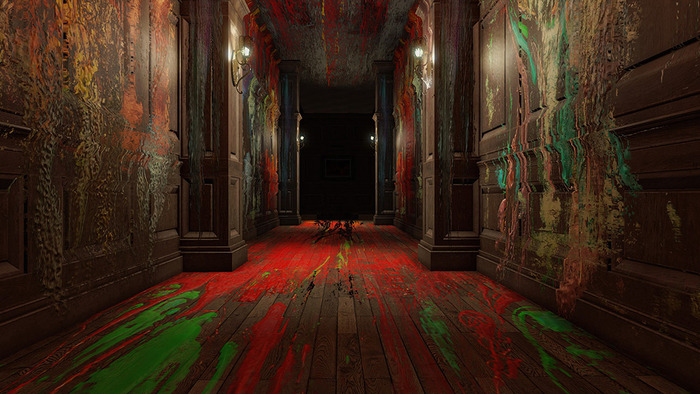
These hallways still scare me to this day. (Bloober Team, Aspyr Publishing)
Bloober Team took on a new kind of edge with their follow-up title, Observer, which had Blade Runner’s Rutger Hauer voicing the lead protagonist. It was a darker and more cyberpunk kind of story, taking on Artificial Intelligence, the bleak drug-fueled and terrifying future and just what it meant for technology to take over. This time around, Bloober Team put a few more action mechanics in the game than Layers of Fear had. Then again, was it meant to be the same style of game? I doubt it. Observer was definitely a mind-bending experience but when it ended, you definitely felt like you played a game. Layers of Fear, however, felt like it played you.
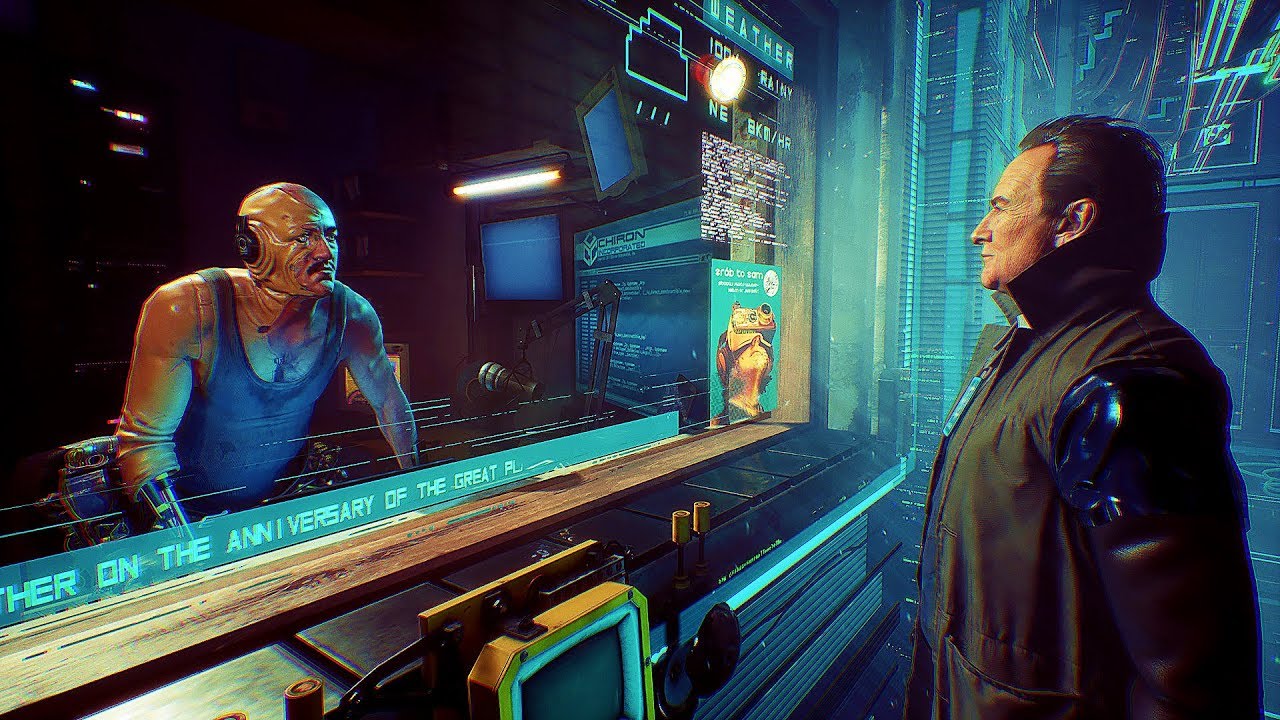
Rutger Hauer’s voice work cannot be missed in Observer. (Bloober Team, Aspyr Publishing)
When the announcement came that the development team was working on the sequel to Layers of Fear, speculation was all any of us fans could work with. Was it going to continue the story from the first? Would it still have an artistic slant to it? Many people assumed, like I did, that it would have the same formula as the first game. A walking simulator on acid, you know? Yet, Observer was quick to show us that Bloober Team was at least toying with stealth mechanics and persistent enemies quite like Amnesia did so many years ago. For some reason though, I guess we thought that it was a tested scenario and perhaps it wouldn’t touch a game that didn’t need enemies in it to be absolutely terrifying. All it needed was some paint brushes and haunting hallways to have us white-knuckled and unblinking.
As of writing this, I’ve completed Layers of Fear 2 with one story ending under my belt. Strangely enough, I felt troubled by this game and had to question just why I wasn’t attaching to it in the same way I did with the first. See, sometimes this happens and folks will love an opening title but then play the sequel and feel like something was left behind. A sense of soul, a sense of purpose or even just a sense of remembrance for what got the game so highly marked in the first place. It’s not to say that the game was bad, because it definitely isn’t, but it felt like it abandoned charisma in favor of encouraging gamers that wanted more action. Here I was, wanting to absorb a rich story and instead I was being chased and fumbling through rooms and choking on story beats.
I blame myself.
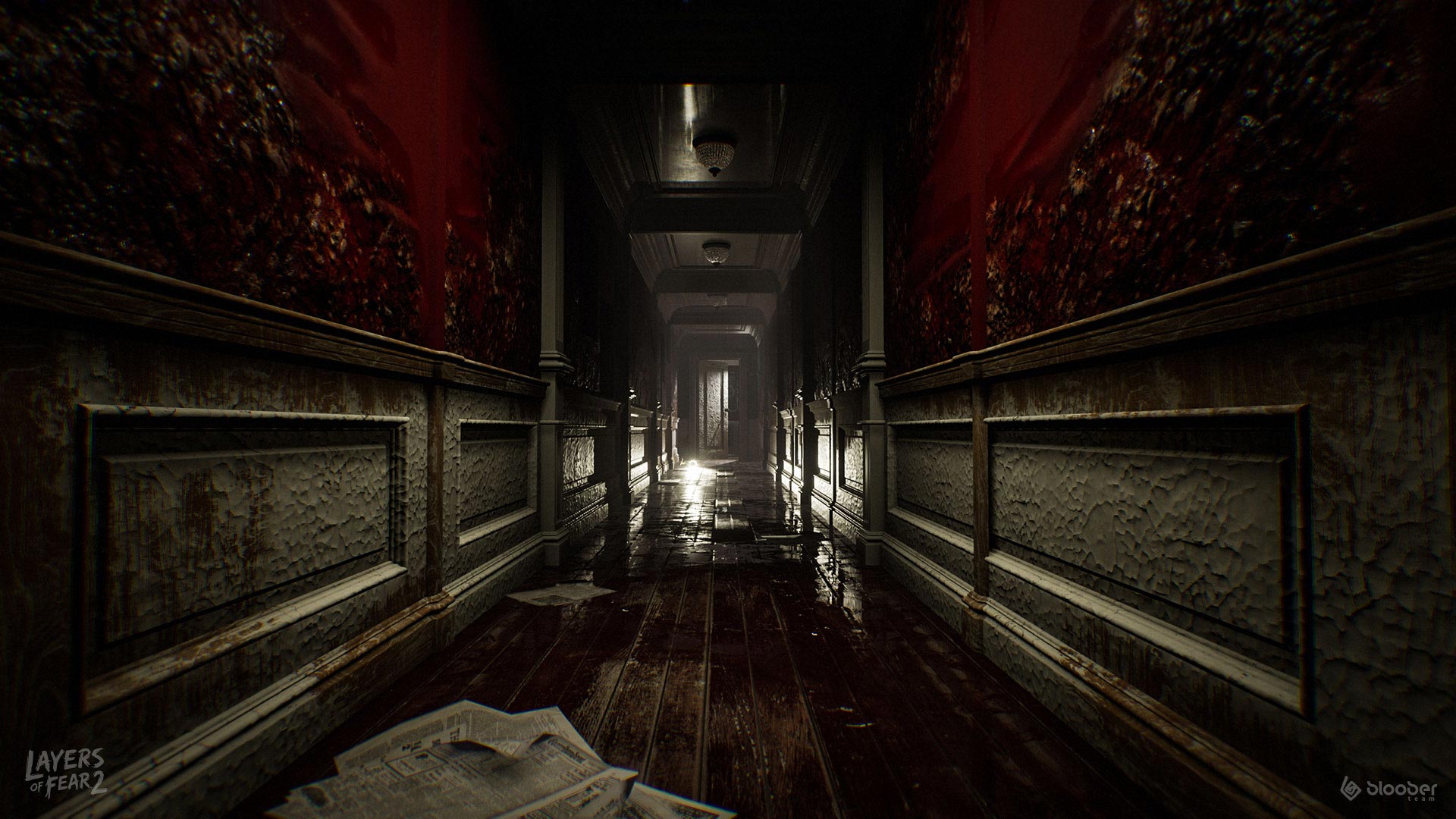
Once more unto the breach in Layers of Fear 2. (Bloober Team, Gun Media)
See, the horror genre of gaming is something that shifts and adapts quite frequently within indie development circles. Trends occur and everyone dips out of the last fashionable marker in a move to grasp onto what is becoming hot. It’s good business, to be honest, but sometimes it leaves people wondering what-if. To expect artists, which is what developers are, to stay in the same lane forever simply because you loved their initial outing — is cruel. It’s downright painful to ask someone who creates a piece you like to continue making the same content for you day in and day out. It’s not to say that they should leave behind every signature of theirs and Layers of Fear 2 definitely held some good homage pieces, but I found myself placing the disappointment where it belonged: Me.
When I really sit back and think about atmospheric horror, Layers of Fear, its sequel and the developers behind it — I feel like it tells a far more enriching story. It’s a story of a development team who put themselves out there and told a story, thus putting their feet firmly in the spotlight with their first horror game. The story unfolds to show growth and development, of creators who want to try something that maybe they didn’t have the tools for, but now they do. In essence, Layers of Fear 2 is quite possibly their perfect showing because it is what they wanted all this time. As Tony Todd’s voice speaks through gravel-tongued narration, you can’t help but take notice that this was the gestation of what they were aiming for all along.
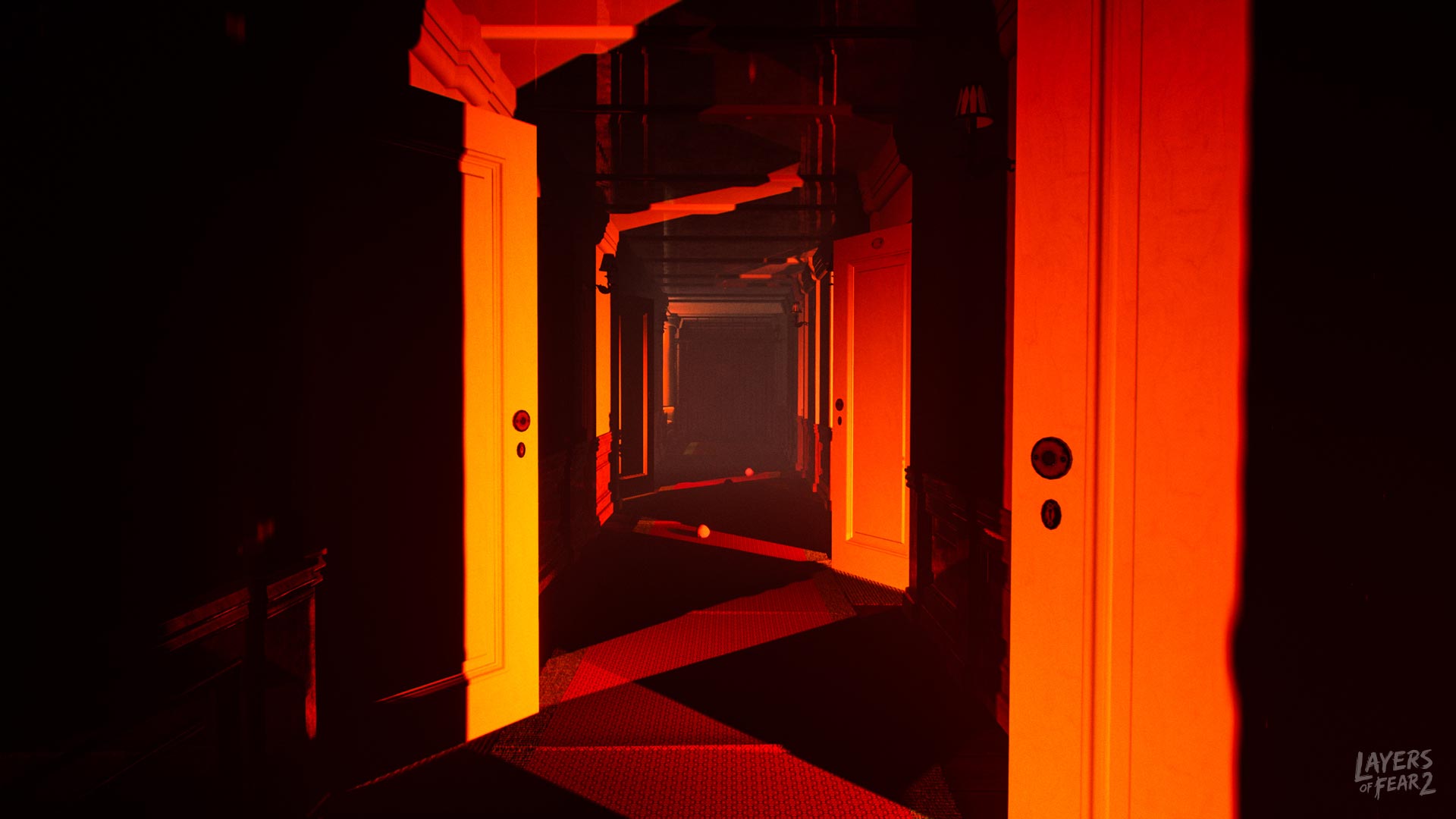
Towards the final acts of the game, the real homage to their first title spilled out into the hallways. (Bloober Team, Gun Media)
People who love their specific sub-genres and obsess about them, like I do, can sometimes be part of a larger problem. We love what we love and it takes some thought to remember that these are people, not machines, that create these things we cherish and admire. They are artists, just like the protagonist in Layers of Fear, and they need to be left to create without the restriction of an audience who doesn’t want to grow with them. Atmospheric horror is going nowhere and Layers of Fear 2 still provides it in spades but the true scares come from reviews by people who don’t want to let artists flourish under our ever watchful eyes.
